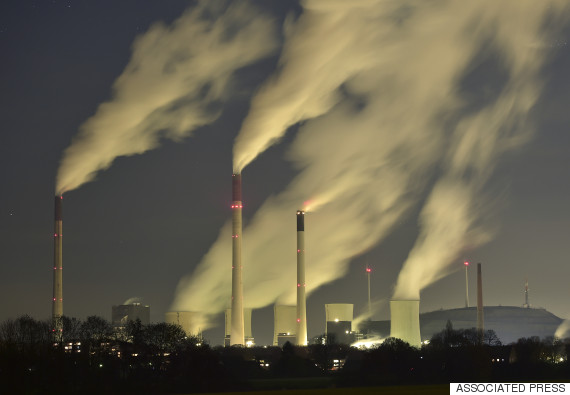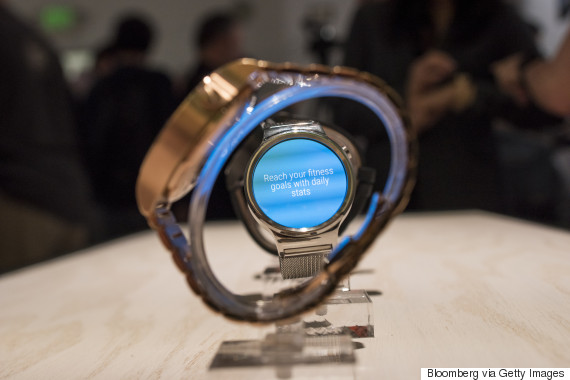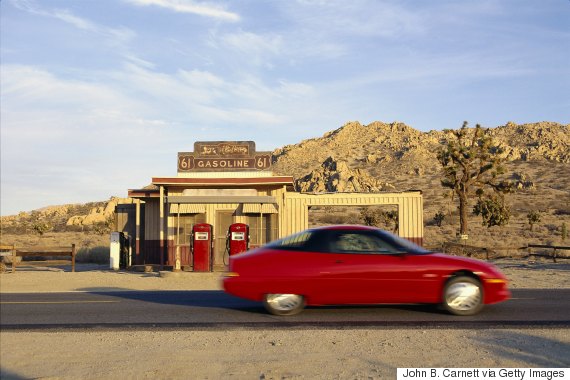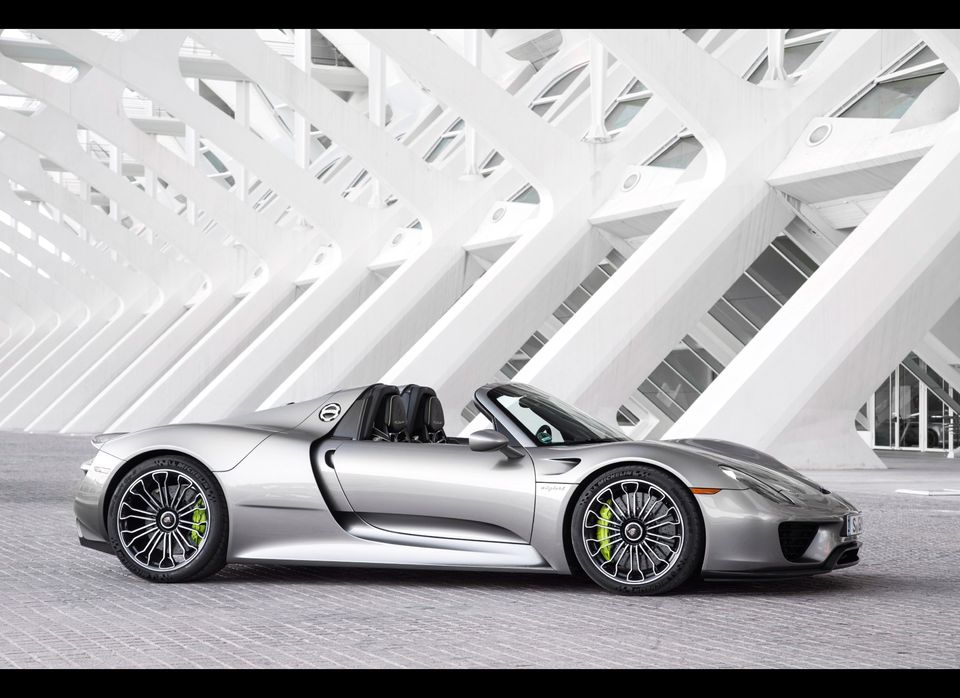
As an informed reader of The WorldPost, if you viewed Jeremy Rifkin's articles on the "Third Industrial Revolution," you may have read seriously and given some thought to the premises and projections for a few moments. You may have just skimmed. You may have thought, "Interesting, but just another projection of the future that's jamming the Internet and talk television." Or, "So what, another prophet is reading the tea leaves to predict the future."
Whatever your initial thoughts, you then got on with your life, worrying about the kids, planning your day, going to work, taking care of all manner of today things. If you run a business, you went on worrying about cash flow, keeping customers happy and employees engaged and on track -- and if there was time, planning prudently to invest and build for the future. If you are in government, you were swamped with meetings and generally trying to get things done through the myriad of mazes that is government bureaucracy.
So, the question is, the Third Industrial Revolution ... so what!?
The "so what" of it is that this is only the third time in human history when there has been a confluence of radically more capable technologies in energy, propulsion and communications, enabling not only new, but revolutionary new forms of human endeavor, new products serving peoples' needs and desires, new businesses and new social models. When enabling fundamentals such as the five pillars of the Third Industrial Revolution converge, ideas spawn and connect. People experiment. New ideas breed even newer and better ideas. Things reorganize. The world changes.
The last time such a major confluence of enablers happened is called the Industrial Revolution in textbooks. But, in truth, it was one of only two such events in the history of mankind. Each changed human history fundamentally and irreversibly.
The initial result of this last event is that a small island off the coast of Europe transformed itself into the British Empire, a global colossus that turned much of the world into suppliers of raw materials needed to feed the massive industrial engine of the Empire. English became a necessary form of communication, and the framework of today's global education structure was created to supply capable workers to keep the global enterprise running efficiently. We are all today now living in the evolved form of that revolution.

The "so what" message, then, is that there are massive winners and losers in this process. Nations rose. Nations fell. Economies prospered. Economies went bankrupt. Businesses were created. Businesses failed. Workers thrived. Workers were displaced. Fortunes were made. Fortunes were lost. And the Luddite movement, which protested, sabotaged looms and gears and set fires in factories, was squashed by the inevitability of the creative construct. Stop it in one place and it springs up somewhere else in a new and more capable form. Such is the power of the fundamental, enabling, synergistic ideas, technologies, products, businesses and social constructs that the world was forever changed.
I think we would all agree that it's been for the better, even though there are undeniable and serious problems and externalities that need our most urgent attention. Yet, I suspect that most of us would rather stay in this time and place than go back to a past time of incredible scarcity and shorter lifespans.
In that historical context, the Third Industrial Revolution concept and understandings are then potentially vitally important.
The synergistic effect of Rifkin's five pillars and the multiplicative power of their combined capabilities and virtues enables solutions to the most pressing deficiencies of the current world, which is based on the Second Industrial Revolution, like pollution, climate change and global distribution of wealth. The Third Industrial Revolution is a natural and healthy way to address these critical problems without needing to resort to artificial mandates and penalties-based approaches, which, no matter how carefully conceived, always bring manifold and often serious unintended consequences.
It is far better and more efficient to work to enable the Third Industrial Revolution, which is eventually and inevitably going to happen anyway.
As Les Shephard of the University of Texas, San Antonio wrote in a recent email to me, "It seems Rifkin's message has become a beacon for many in the developed world and a source of hope for those from emerging nations."
'Rifkin's message has become a beacon for many in the developed world and a source of hope for those from emerging nations.'
If this is true, then how should we think about the Third Industrial Revolution? What is it really?
A good analogy for the Third Industrial Revolution is to think of it as an all-encompassing "Moore's Law" for energy, power, communications and major social constructs. "Moore's Law" is a well-known projection by Gordon Moore of Intel that described the future frenetic progress of integrated circuits, their size, capability and cost. It is based on a fundamental understanding that the path to those things would be determined by continued reductions in the wavelength of light used in the photolithographic processes and the normal learning processes from experience and volume manufacturing, aided by inevitable human creativity and ingenuity. Smaller feature sizes. Smaller devices. Chips with millions of devices. Faster computers. Faster data rates. Massive memories.
Moore's Law is at once a vision of the future -- millions of devices on a chip, higher speed, more capability -- as well as an important guideline on the path to that end. The critical piece of learning from this analogy, however, is that those that understood and consistently acted on the many implications of this seemingly simple statement have prospered. They grasped the opportunity. Like Intel, Microsoft, Apple, Amazon, Google, Uber, Kahn Academy, Alibaba and so many others. Computers are everywhere.
Bandwidth, powerful software, Internet, communications, personal power, the "Internet of Things." Those that missed or did not think through the broader implications failed. Here are a few examples: RCA, the then dominant global electronics giant, which made modern integrated circuits for the government, chose, for internal reasons, to wait until it was too late to catch the semiconductor pioneers. RCA is now, at best, a second-rate brand name only. Then there's Kodak, with an enabling tech base, big money at its disposal and formidable patent portfolio, which has basically gone away, dissolved by choosing to make its profits and invest in film for far too long. ("Mama, Moore's Law done took your Kodachrome away.") And IBM, the globally dominant computer company, which invented the basic architecture of the modern personal computer, euphemistically known as "Wintel," chose not to build on the opportunity, instead focusing on defending its mainframe computer business. That choice, in turn, opened the door for Intel and Microsoft to become the dominant enterprises they have become. Other examples abound.

So, is the Third Industrial Revolution really a Moore's Law?
Those of us who have been involved with helping create some of the technologies, products and businesses embodied in Rifkin's five pillars think it is. And, by working with and applying its synthesis deeply and in detail, we become convinced it is. The Third Industrial Revolution is based solidly on observations of what is and what is now emerging. For example, solar cells are following their own Moore's Law trajectory. They are now at parity with and soon will be cheaper than conventional power generation. It's happening globally today. China installed almost as much solar capacity in 2014 than is currently in place in the total U.S.
For my part, in the automotive industry, antilock brakes led to stability control, and electric power steering and advanced sensors led to "active safety" and automatic parking. Internet connectivity will soon enable driverless cars, which inevitably will be connected with Uber-type business constructs.
When our General Motors team created EV1, we knew from basic physics that an electric drive was a better way to propel vehicles. The protests and movies when EV1 was shut down poignantly proved its popularity. Next generation, on-board electric power and energy-storage systems that we and others had under development at that time are now entering the marketplace. Today, those lithium batteries and hydrogen fuel cells are powering electric cars being introduced by numerous automotive companies. During the run up to the Frankfurt Motor Show, BMW, Mercedes, Audi, Porsche and Jaguar Land Rover announced or showed new electric vehicles and/or vehicle architectures that enable several electric propulsion variations all from the same modular architecture.
China announced a 50 billion yuan ($7.85 billion) development this year for electric and highly electrified cars. Additionally, China's production of such vehicles is expanding rapidly, threatening to surpass the United States. Meanwhile, Toyota announced a new plug-in hybrid Prius with 30 miles of pure electric range, in addition to its revolutionary Mirai fuel cell automobile.

The electrification of the automobile is in full swing, including Formula 1 race cars being hybridized, not only because of mandates, but because the products are better, more responsive, more efficient, quieter and, like Teslas, just plain more fun.
Some EV's are being fueled by solar today. More will be tomorrow as more solar is installed.
Without a doubt, renewable wind and solar energy will create electricity and electrolyze water to form the electricity-hydrogen complimentary energy carrier set, which will fuel our vehicles and allow us to store our renewable energy. It is happening today. And, with something on the order of 100 KW of power electronics, energy storage and power capability in every car, how long before cars that are parked over 90 percent of the time will be plugged into and become part of a new Web-enabled distributed energy network and energy-price arbitrage network?
So, relative to the Third Industrial Revolution construct, it delineates both an end point and guidelines to the future, based on today's observed realities. It is the foundation on which the next phase of our collective human future will be built. How quickly and well that future is built matters to our kids and grandkids and those of future generations unborn.
How quickly and well this future is built matters to our kids and grandkids and those of future generations unborn.
There is little doubt that it will happen. It is happening today. It is built on the ongoing results of ideas turned into products and businesses by the sustained effort of millions of our fellow humans worldwide, combined with the investment of billions of dollars.
But, we must recognize that the next stage of the rollout will not be smooth or easy. It will be messy and confusingly people-centric, with our today-focused pressures and preoccupations, prejudices, fears and the all too human foibles.
Make no mistake. There will be winners. There will be losers. Nations will prosper. Nations will stumble. Companies will arise. Companies will disappear. People who develop the requisite skills through luck or educational opportunity or personal drive will prosper. Those without will struggle.
Looking back on the last industrial revolution or the recent computer/semiconductor/software/Internet revolution, it all appears deterministic in hindsight. Clearly this was all enabled and foretold, and only a fool would have missed it, at least as books and magazines present it.
But, in fact, it was generally chaotic. It was created by those with an idea and passion here, a risk taken there, a decision taken to commit to, protect and grow the disruptor in spite of the ever-present inertia and bureaucratic obstacles, emotional objections and protection of what currently is. The Internet of Things was created by people who internalized the basic understandings of what was happening through Moore's Law and acted on it. Opportunities were missed by those who didn't see the storyline, chose to ignore the all-too-clear message, chose the path of obstructionism, or were not, owing to various circumstances, able to participate.
So, with that in mind, we are presenting this conversation on the Third Industrial Revolution for your consideration in the hopes that as a Moore's Law-like guideline, it will aid you personally, your family, your organization, your nation, your region and, as a result, mankind in general, to understand, align activities, seize opportunities and together, piece by piece, create a far better, more prosperous, sustainable, healthy and more equitable society and future for all of us.
As Sheikh Zaki Yamani, a Saudi oil minister for more than two decades, once said, "The stone age didn't end for lack of stone."
And, as Louis Pasteur said, "Chance favors the prepared mind."
The Third Industrial Revolution is now upon us. What we make of it will be our legacy.
